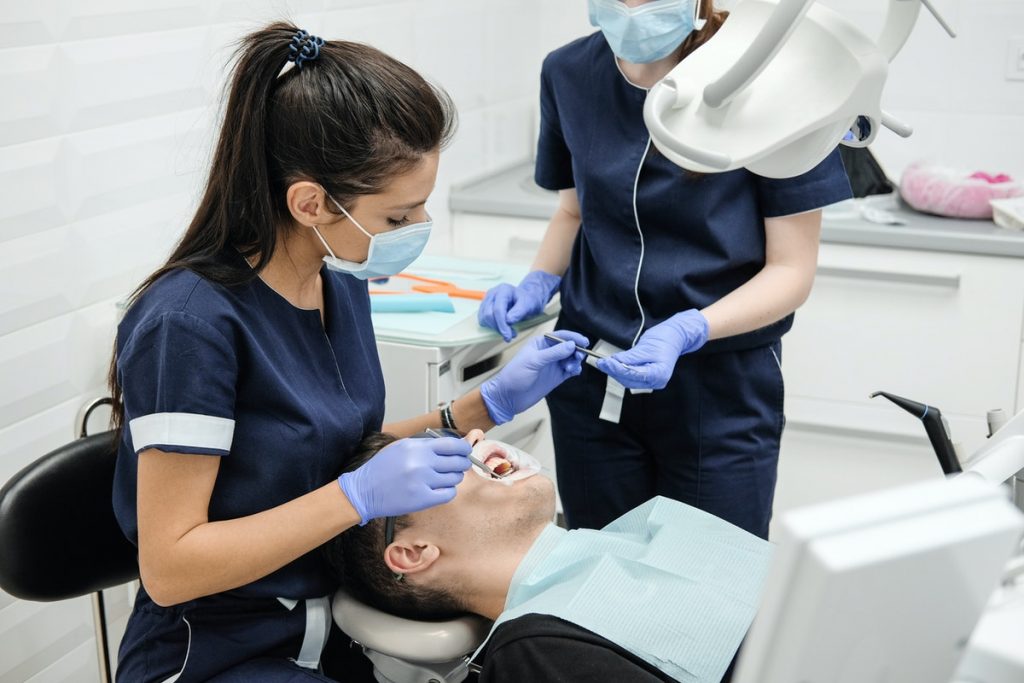For men, self-confidence is vital to success. With a bright smile, a man is more likely to impress those around him. But smiling is challenging when they deal with dental problems, such as malocclusions.
Whether it’s your first time to hear this or you’ve been diagnosed with it and need more ideas, you’ve come to the right page. This article explores what malocclusions are and treatment options available, so you can finally get your confidence completely.

What Are Malocclusions and What Causes Them?
People’s teeth are supposed to fit together perfectly. If they don’t, it is called a malocclusion. Malocclusions can cause misaligned bites, which put pressure on the teeth.
Two of the most common types of malocclusions are overbites and underbites. A person with an overbite has their upper front teeth extending too far forward. A person with an underbite has their lower front teeth extending too far forward.
Another kind of teeth misalignment is overcrowding, in which there are too many teeth for the size of the mouth, and tooth rotation, in which teeth do not grow straight.
A malocclusion can cause a number of problems, including:
- Bacteria buildup in the mouth (leading to tooth decay and gum disease)
- Misalignment of the jaw (leading to chronic jaw and muscle problems)
- Misalignment of the teeth (leading to tooth decay and gum disease, as well as speech problems)
- Irritation or damage to the tongue or lips
People can have a malocclusion since birth, develop it later in life, or inherit a tendency toward developing one. Most cases of malocclusions are not serious. In severe cases, however, people may need braces or other types of corrective devices to realign their teeth and jaws.
How Are Malocclusions Diagnosed and Treated in Adults?
An adult with malocclusion may seek treatment after noticing the problem or because of associated problems like pain, tooth decay, or gum disease.
To diagnose an adult’s malocclusions, dentists usually start by looking inside the mouth; they may use X-rays to examine the structure of the jaw and teeth. To determine whether braces are necessary, the dentist may use a device called a study model. This model is filled with plaster or other material to make an exact copy of the inside of the mouth.
Braces are possible treatments for malocclusions in adults, and they can take about two years to straighten teeth and may involve other dental work, such as jaw surgery.
Dentists can recommend different types of braces. For example, some types of braces use metal wires to gently pull the teeth into the line. Other types of braces attach to the front of each tooth and use small rubber bands or springs to gradually move the teeth into better positions.
Invisalign is one of the most popular treatments for malocclusions. It is a type of brace that uses clear plastic aligners to straighten teeth. Aligners are custom-made for each person and are removable, which makes them a welcome choice for people who want to straighten their teeth without the appearance of traditional braces.
Invisalign has a number of benefits, including the ability to eat and drink whatever you want while wearing them, brush and floss your teeth normally, see your progress as you wear them, and shorten treatment time compared to traditional braces. Invisalign is also comfortable to wear and does not cause irritation like some traditional braces.
After braces, you may need to wear retainers, which keep the teeth in place after the braces are gone. They are not the first option in correcting teeth misalignments since they are not that strong.
When Do You Need Jaw Surgery?
People who have serious malocclusions or other dental problems may need surgery to realign their jaws and teeth.
The type of surgery depends on the problem and usually involves moving bones and/or repositioning teeth into a better location in the mouth. It is also possible for dentists to use something called orthodontic headgear to move the jawbones into a better position.
Because the procedure is risky, this is often the last resort. Instead, the orthodontist will likely remove a few of the teeth to give space for others to move. In case of gaps, the dentist may:
- Fill the gap with a small bridge
- Place artificial teeth in the space
- Place removable appliances on the teeth to hold them in place
This is often done for short-term use while braces work their way through pushing and pulling teeth into better positions.
It can be difficult to live with a malocclusion. Not only do they affect your dental health, but they also impact the condition of your gums and tongue. But there are plenty of treatment options available including braces or Invisalign. Your dentist can provide you with the best solution, so your teeth won’t cause poor self-esteem anymore.

